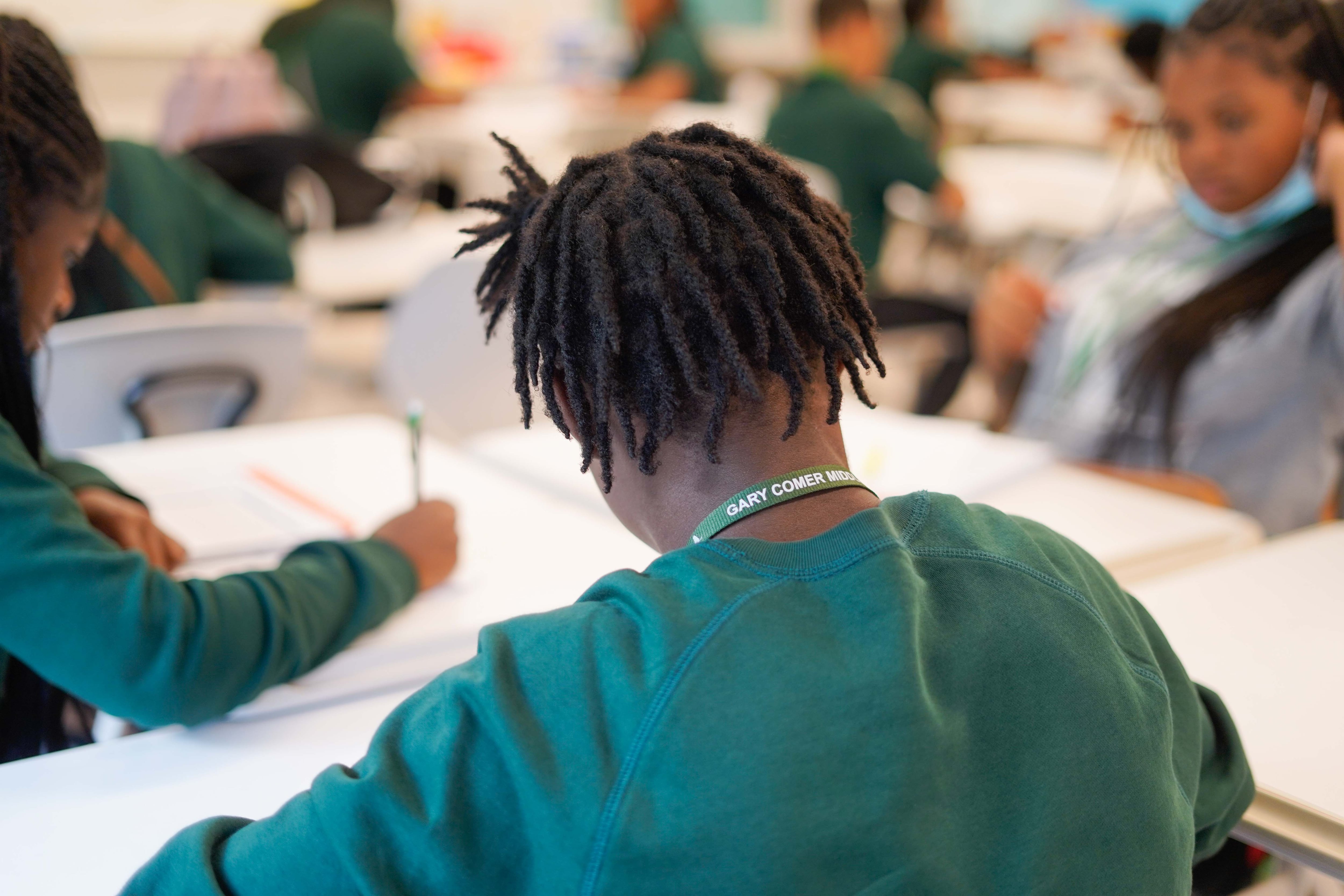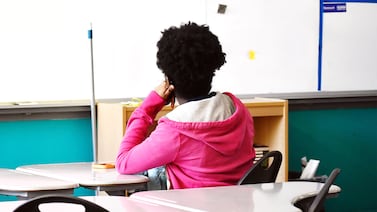Sign up for Chalkbeat Chicago’s free daily newsletter to keep up with the latest education news.
Chicago Public Schools is proposing a $9.9 billion budget for next school year that closes a roughly half-billion-dollar deficit mainly by cutting central office expenses — but does not yet include raises for teachers and principals whose unions are negotiating new contracts with the district.
The proposed budget includes a $149 million increase in funding for schools, driven by a $62 million increase for services for students with disabilities, as well as increases for charter schools and bilingual services, according to a district news release.
A spike in the capital spending plan — to $611 million — accounts for nearly all of the overall budget growth over last year’s $9.4 billion budget. In last year’s budget, district leaders budgeted an unusually low $155 million for buildings and put most projects on hold while they developed a long-term infrastructure blueprint.
CPS said it closed its budget gap by cutting $197 million at its central office departments, including for academic and operational costs. It also tapped additional federal and other grants, restructured its debt and reduced its short-term borrowing costs, and cut central office staff.
Budget data shows the district is proposing to eliminate 37 positions it describes as “citywide student support,” seven central office employees, and a school administrator. A central office hiring freeze will affect 200 positions, according to a spokesperson. Meanwhile, the district is adding another 800 school-based positions for the fall, including about 500 teachers.
“This budget very clearly puts teaching and learning front and center where it belongs,” said CPS CEO Pedro Martinez in a statement.
In a strongly worded statement, the Chicago Teachers Union criticized the draft budget, calling Martinez’s leadership “inadequate.” It faulted him for prioritizing a “fiscally responsible” image and for passing up on “opportunities for partnership and transformation presented by ongoing bargaining” with the union, though it did not specify what these opportunities might be. This past spring, Martinez and union leaders traveled to Springfield to jointly lobby state lawmakers for additional funding, but the push delivered only a fraction of the dollars CPS requested.
“As we review this budget proposal, it is clear that CPS leadership has failed to take steps to guarantee our students and their families what they need to dream, achieve and thrive,” CTU President Stacy Davis Gates said in the statement.
The details released by CPS Wednesday mark the first time the district has shared dollar amounts and comparisons to previous spending for its proposed budget. The proposal comes at a time when the district faces growing financial and political pressures. And it will likely need to be amended once district officials reach new contract agreements with the Chicago Teachers Union and the principals union, and the costs of educator salaries and benefits are finalized.
The district revised its deficit projection from nearly $400 million to $505 million due to rising health care costs and expenses on students with disabilities.
For the past four years, CPS benefited from $2.8 billion in federal COVID relief dollars. A Chalkbeat analysis earlier this year found roughly 7% of school budgets were supported by federal COVID dollars. The proposed budget released Wednesday spends the remaining $233 million in COVID aid.
And earlier this year, CPS unveiled a controversial new process for allocating money to each of its 500 campuses. It’s replacing the previous student-based budgeting system with one that focuses on baseline staffing positions. It used an Opportunity Index — a metric that combines student demographics, neighborhood characteristics, and other factors — to calculate these extra dollars.
Officials said that the approach resulted in more equitable budgets across the city. However, some magnet and selective enrollment programs said they ended up with tighter budgets that will make it hard to continue providing their distinctive programming.
The budget unveiled by the district Wednesday comes roughly a month later than usual in the cycle, and after the start of the fiscal year. Martinez has said that because of the new approach to budgeting for schools, officials wanted to take extra time to double-check their work and communicate with campuses and others.
The district said Wednesday that its student enrollment grew by more than 4,700 students during the course of this past school year to about 328,000 students. Enrollment grew slightly last fall amid the arrivals of thousands of migrant families after a decade of sharp declines.
The district noted Wednesday that compared with a year ago, it’s serving 12,000 more students who don’t have a stable place to live, 10,000 more English learners, and 4,000 additional students with disabilities.
The district released data on school budgets in late May, but it only included numbers of staff positions instead of dollar amounts as in previous years, making comparisons to the 2023-24 school year difficult.
District leaders had vowed to keep school funding steady or even increase it, saying that’s crucial to keep the momentum on a post-pandemic academic recovery, especially in reading, for which Chicago has gotten some national recognition.
The union negotiations mark another wrinkle for the budget proposal.
In the past, the school board has voted on an amended budget after a contract agreement was settled. Earlier this month, the union held a press conference to decry layoffs of about 330 support staffers it represents, even as the district vowed that it would rehire them and another 270 or so laid-off employees for positions on other campuses, or pay their salaries during the coming school year.
In an email update to parents this week, Martinez said CPS is reviewing more than 700 proposals submitted by the teachers union in April. But he pointed to no specific agreements so far, aside from a memorandum of understanding guaranteeing support staffer positions or pay. The district’s previous contract with educators expired at the end of June.
The district said Wednesday that it would adjust the budget to reflect added personnel costs after it reaches contract deals with the teachers union and a recently formed principals union.
The school board is slated to vote on the budget at its regular July 25 meeting. The district will host hearings on both its overall and capital budget next week.
Reema Amin contributed reporting.
Mila Koumpilova is Chalkbeat Chicago’s senior reporter covering Chicago Public Schools. Contact Mila at mkoumpilova@chalkbeat.org.







